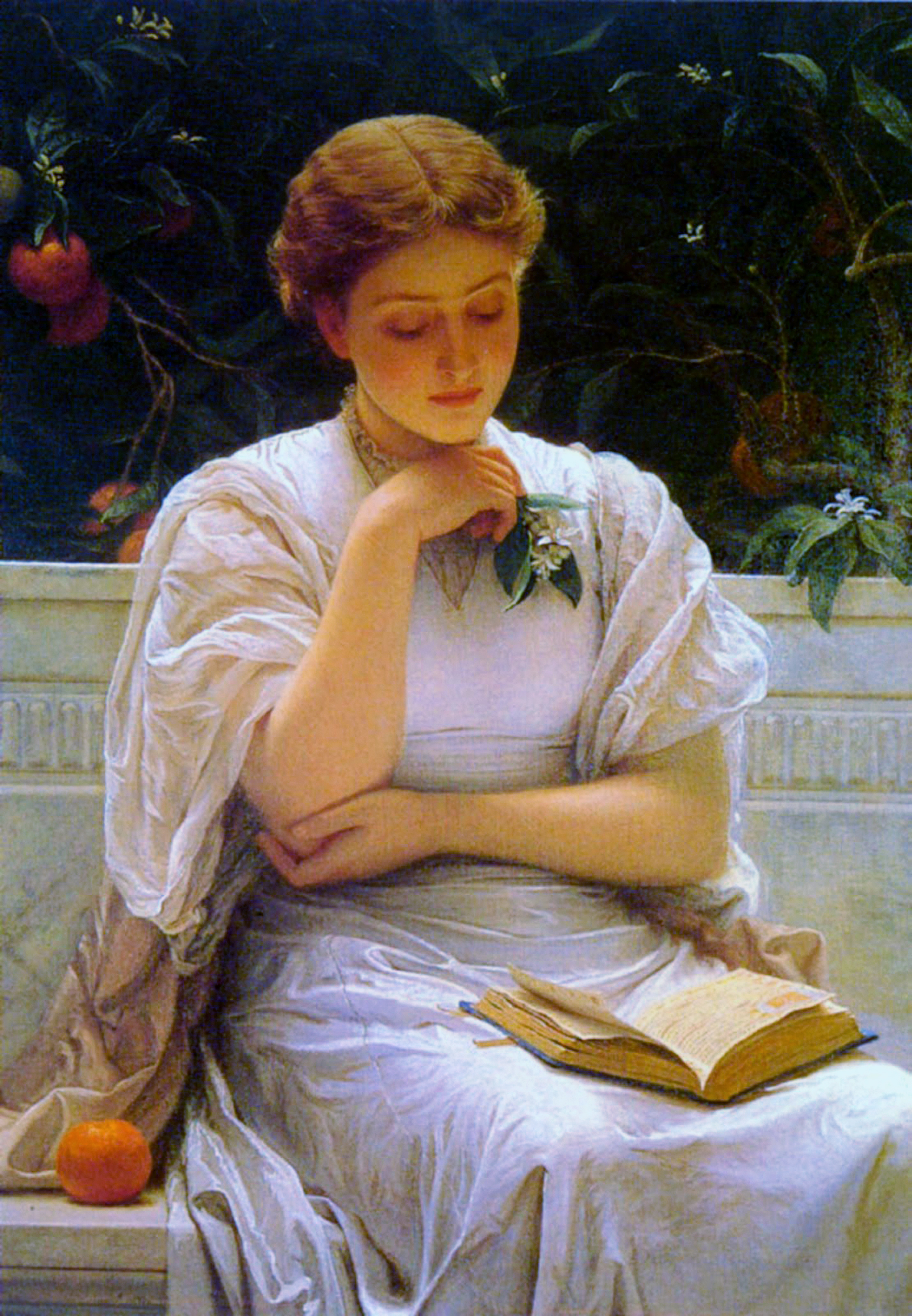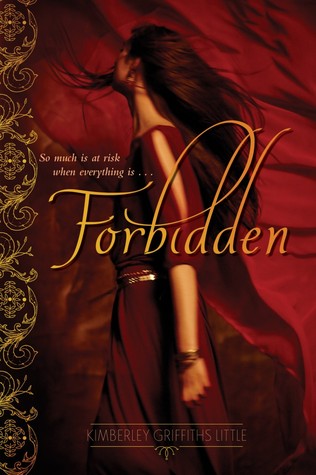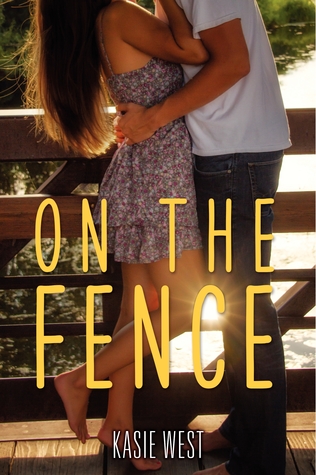I’m pretty open about the fact that I love young adult fiction, both as a reader and as a writer. I know the same is true for a lot of my friends, largely because books written for teens are less likely to include gratuitous sex scenes and excessive violence (though this is changing, particularly in edgier books geared at older teens). But I think there are other compelling reasons to read young adult literature.

As Sarah Burnes (a literary agent at the Gernert Co.) wrote for the Parisian Review:
When I read YA and children’s fiction, I feel knit together with the person I was and who I am, still, becoming. It feels, in Gilligan’s words about girls’ relationships, like a “continuing connection” with my past internal selves—especially my reading selves, my favorite selves.
I like too, what Neil Gaiman says about reading for pleasure (which is where most YA books fall for me):
And escapist fiction is just that: fiction that opens a door, shows the sunlight outside, gives you a place to go where you are in control, are with people you want to be with(and books are real places, make no mistake about that); and more importantly, during your escape, books can also give you knowledge about the world and your predicament, give you weapons, give you armour: real things you can take back into your prison. Skills and knowledge and tools you can use to escape for real.
I think this year’s Whitney finalists for young adult literature (non-speculative) do just that: they provide a window on the world, they allow readers to experience (or re-experience) the pleasures and pains peculiar to being a teenager, and (mostly) they offer hope.
Chris Crowe’s Death Coming up a Hill won the AML (Association of Mormon Letters)–and for good reason. This novel has the potential to be gimmicky: after all, it’s written entirely in haiku (976 stanzas–one syllable for each of them 16,592 American soldiers who died in Vietnam), it deals with a boy coming of age in 1968, at the height of the Vietnam war, and his parent’s imploding marriage. Surprisingly, despite the format, the book is compulsively readable. The haiku is almost effortless as it weaves the story of Ashe’s life, his obsession with the mountain casualties in Vietnam, his crowing relationship with his girlfriend, and the truce he tries to negotiate between his parents, an unlikely couple who married only because he was on the way. Crowe deals with heavy topics–death, war, and racism–but the novel itself never feels heavy. Instead, it’s thought-provoking and moving, the prose is both elegant and spare, and Ashe is a fascinating, well-drawn character.
Death Coming up a Hill won the AML (Association of Mormon Letters)–and for good reason. This novel has the potential to be gimmicky: after all, it’s written entirely in haiku (976 stanzas–one syllable for each of them 16,592 American soldiers who died in Vietnam), it deals with a boy coming of age in 1968, at the height of the Vietnam war, and his parent’s imploding marriage. Surprisingly, despite the format, the book is compulsively readable. The haiku is almost effortless as it weaves the story of Ashe’s life, his obsession with the mountain casualties in Vietnam, his crowing relationship with his girlfriend, and the truce he tries to negotiate between his parents, an unlikely couple who married only because he was on the way. Crowe deals with heavy topics–death, war, and racism–but the novel itself never feels heavy. Instead, it’s thought-provoking and moving, the prose is both elegant and spare, and Ashe is a fascinating, well-drawn character.
Kimberley Griffiths Little’s Forbidden (also an AML finalist) is a lushly drawn portrait of a young  woman living in Mesopotamia. Jayden’s life in one of the nomadic middle-eastern tribes is hard, but it has its share of beauty–in the women’s dances, in the celebrations of food and life. But when Jayden’s father betroths her to Horeb, a man she has known all her life but has come to mistrust, Jayden realizes she can have a life of wealth and luxury, but it might come at the expense of her own heart and beliefs. The appearance of a kind stranger, Kadesh, further complicates Jayden’s decision. The novel is the first of a planned trilogy, so it’s not surprising that the story ends with many unresolved questions–but the creatively imagined look at Little’s intricate world is worth the read.
woman living in Mesopotamia. Jayden’s life in one of the nomadic middle-eastern tribes is hard, but it has its share of beauty–in the women’s dances, in the celebrations of food and life. But when Jayden’s father betroths her to Horeb, a man she has known all her life but has come to mistrust, Jayden realizes she can have a life of wealth and luxury, but it might come at the expense of her own heart and beliefs. The appearance of a kind stranger, Kadesh, further complicates Jayden’s decision. The novel is the first of a planned trilogy, so it’s not surprising that the story ends with many unresolved questions–but the creatively imagined look at Little’s intricate world is worth the read.
 Jessica Martinez is a master at combining lyrical prose with tense, sometimes dark plots, and Kiss, Kill, Vanish is no exception. Valentina Cruz, a pampered, wealthy Miami girl, finds herself on the run from everything she knows after witnessing her boyfriend, Emilio, shoot and kill another man on her father’s orders. Hiding (and freezing) in Montreal, Valentina tries to make sense of her life and figure out what to do next. Posing for paintings by a spoiled rich boy, Lucien, gives her enough money to live on, but not enough to buy her self-respect. But when the unthinkable happens, Valentine finds herself forced to confront her past with a most unlikely ally: Lucien’s drug-abusing, cynical younger brother, Marcel. Martinez does a wonderful job painting the characters: Lucian’s thinly veiled insecurity, Marcel’s contempt, Valentina’s own struggle to understand herself and the life founded on drug money. And some of her word-paintings for setting are stunning and vivid. Some readers won’t like the allusions to drug use and sex in the main characters, and the plot-line is admittedly dark (and sometimes violent). The ending wasn’t entirely plausible to me, and I spent too much time wishing Valentine would just get over her ex-boyfriend, but there was so much to love about the book (the writing, Marcel–surprisingly enough!, and the vivid settings), that these didn’t detract from my overall enjoyment too much.
Jessica Martinez is a master at combining lyrical prose with tense, sometimes dark plots, and Kiss, Kill, Vanish is no exception. Valentina Cruz, a pampered, wealthy Miami girl, finds herself on the run from everything she knows after witnessing her boyfriend, Emilio, shoot and kill another man on her father’s orders. Hiding (and freezing) in Montreal, Valentina tries to make sense of her life and figure out what to do next. Posing for paintings by a spoiled rich boy, Lucien, gives her enough money to live on, but not enough to buy her self-respect. But when the unthinkable happens, Valentine finds herself forced to confront her past with a most unlikely ally: Lucien’s drug-abusing, cynical younger brother, Marcel. Martinez does a wonderful job painting the characters: Lucian’s thinly veiled insecurity, Marcel’s contempt, Valentina’s own struggle to understand herself and the life founded on drug money. And some of her word-paintings for setting are stunning and vivid. Some readers won’t like the allusions to drug use and sex in the main characters, and the plot-line is admittedly dark (and sometimes violent). The ending wasn’t entirely plausible to me, and I spent too much time wishing Valentine would just get over her ex-boyfriend, but there was so much to love about the book (the writing, Marcel–surprisingly enough!, and the vivid settings), that these didn’t detract from my overall enjoyment too much.
Amy Finnegan’s Not in the Script is a book I’ve wanted to read since before it came out (one of my writer friends was fortunate enough to read an Advanced Review Copy and raved about it). L uckily, the book lived up to the hype. Emma Taylor is a successful teen actress who struggles behind the scenes to maintain a strained relationship with her best friend, whose aspiring acting dreams have stalled while Emma’s have shot off, and to ignore the public fascination with her all-to-public heartbreak. When she gets cast to be part of the latest hit TV show, she vows to put dating and romance behind her. But this proves easier said than done when her cast members include her long-time on screen crush–and Jake Elliot, the fashion model Emma’s best friend has been drooling over for months. The book is told from Emma and Jake’s dual perspectives. What I loved about the book was the realistic depiction of characters: no one was wholly good or evil, and both the friendships and the romances were realistically complicated. I liked, too, that for a book that was essentially a romance, Emma’s girl friends still played a central role in the story. Finnegan does a wonderful job combining fun, flirty scenes with some actual depth–the story is happy, hopeful, and warm all at once.
uckily, the book lived up to the hype. Emma Taylor is a successful teen actress who struggles behind the scenes to maintain a strained relationship with her best friend, whose aspiring acting dreams have stalled while Emma’s have shot off, and to ignore the public fascination with her all-to-public heartbreak. When she gets cast to be part of the latest hit TV show, she vows to put dating and romance behind her. But this proves easier said than done when her cast members include her long-time on screen crush–and Jake Elliot, the fashion model Emma’s best friend has been drooling over for months. The book is told from Emma and Jake’s dual perspectives. What I loved about the book was the realistic depiction of characters: no one was wholly good or evil, and both the friendships and the romances were realistically complicated. I liked, too, that for a book that was essentially a romance, Emma’s girl friends still played a central role in the story. Finnegan does a wonderful job combining fun, flirty scenes with some actual depth–the story is happy, hopeful, and warm all at once.
Kasie West is another wonderful up-and-coming YA contemporary writer. Like Finnegan, West’s books have a signature balance of fun, romantic plots with a healthy side-helping of serious issues. On the Fence is a perfect example of this. Charlie (Charlotte) Reynolds has grown up with three older brothers, a neighbor (Braden) who might as well be a brother, and a doting dad. And while Charlie is an outstanding athlete, sometimes she wo nders if she missed out on the feminine touch her mom might have brought. When Charlie gets a job at a downtown boutique to pay for speeding fines, she’s convinced she’s entered an alien world of makeup, frilly clothes, and other girly things she’s never really understood. But to her surprise, there are elements of this girl-world that she enjoys (including friendship with other girls), and as long as she can keep this a secret from the guys (she’s not sure she can stand their ridicule) she’s good. There’s even a boy who might be interested in her. Of course, first she has to figure out how to reconcile all these new, good things with the confusing feelings she has for the boy-next-door, Braden, who clearly only sees her as his friend’s little sister.
nders if she missed out on the feminine touch her mom might have brought. When Charlie gets a job at a downtown boutique to pay for speeding fines, she’s convinced she’s entered an alien world of makeup, frilly clothes, and other girly things she’s never really understood. But to her surprise, there are elements of this girl-world that she enjoys (including friendship with other girls), and as long as she can keep this a secret from the guys (she’s not sure she can stand their ridicule) she’s good. There’s even a boy who might be interested in her. Of course, first she has to figure out how to reconcile all these new, good things with the confusing feelings she has for the boy-next-door, Braden, who clearly only sees her as his friend’s little sister.
I thought the friendship-based romance here worked well, and I loved that Charlie was able to experiment with new things (makeup!) without losing the essence of who she was. And West does an excellent job of including just enough darkness (what actually happened with Charlie’s mom, and why won’t anyone talk about her) to keep the fun, fluffy romance grounded. Perfect summer read.
Which of these finalists have you read? What did you think?
Continue reading at the original source →



